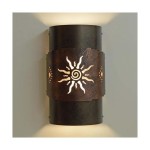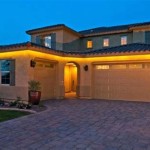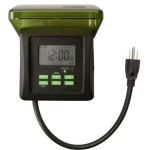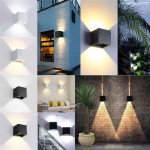Outdoor Lighting Controls: Illuminating Efficiency and Security
Outdoor lighting controls are systems designed to manage and automate the operation of exterior lighting fixtures. These control systems range from simple timing devices to sophisticated, networked solutions capable of responding to environmental conditions and occupancy patterns. The objective of implementing outdoor lighting controls is multifaceted, including energy conservation, enhanced security, improved aesthetics, and extended lifespan of lighting equipment. Effective outdoor lighting control strategies are essential for both residential and commercial properties, contributing to sustainability goals while maximizing the benefits of outdoor illumination.
The selection and implementation of outdoor lighting controls depend on a variety of factors, including the size and complexity of the area to be illuminated, the specific lighting requirements, energy efficiency targets, and budget constraints. A thorough assessment of these factors is necessary to determine the most suitable control system for a given application. Modern control solutions leverage advanced technologies such as sensors, microprocessors, and wireless communication to optimize lighting performance and minimize energy consumption.
Key Point 1: Types of Outdoor Lighting Control Technologies
A range of technologies are available for controlling outdoor lighting, each offering different levels of sophistication and functionality. These technologies can be broadly categorized as follows:
Photocell Sensors: Photocell sensors, also known as light sensors, are among the simplest and most common types of outdoor lighting controls. These devices automatically switch lights on at dusk and off at dawn, based on ambient light levels. Photocell sensors are typically compact and inexpensive, making them a cost-effective solution for basic lighting control needs. However, their functionality is limited to on/off switching based on light levels, and they do not offer advanced features such as dimming or scheduling. Photocell sensors are particularly well-suited for residential applications and small commercial properties where simple, automated lighting control is desired.
Timers: Timers provide a means of controlling outdoor lighting based on pre-set schedules. These devices can be programmed to switch lights on and off at specific times of the day, offering greater flexibility than photocell sensors. Timers are available in both mechanical and digital versions, with digital timers offering more precise control and programming options. Some timers also include features such as astronomical time clocks, which automatically adjust lighting schedules based on sunrise and sunset times for specific geographic locations. Timers are suitable for applications where consistent lighting schedules are required, such as parking lots, building perimeters, and landscape lighting.
Motion Sensors: Motion sensors detect movement within a defined area and activate lighting in response. These sensors are commonly used for security lighting, as they provide immediate illumination when someone approaches a building or enters a designated zone. Motion sensors can be configured to control individual lights or groups of lights, and they typically include adjustable settings for sensitivity and duration of illumination. Motion sensors can significantly enhance security by deterring potential intruders and improving visibility in dark areas. They are frequently used in residential driveways, commercial loading docks, and building entrances.
Occupancy Sensors: Occupancy sensors are similar to motion sensors but are generally more sophisticated and designed for indoor use, although weatherproofed versions exist for sheltered outdoor applications. They can detect occupancy based on a variety of factors, including movement, sound, and infrared radiation. Outdoor-rated occupancy sensors offer a greater level of precision and can be used to control lighting in areas with varying occupancy patterns, such as covered walkways or outdoor seating areas. These sensors can be integrated with dimming systems to further optimize energy consumption by reducing light levels when an area is unoccupied.
Wireless Control Systems: Wireless control systems offer advanced features such as remote monitoring, dimming, and scheduling via a central controller or a mobile app. These systems utilize wireless communication protocols such as Wi-Fi, Zigbee, or Bluetooth to connect individual lighting fixtures and sensors to a central control unit. Wireless control systems provide unparalleled flexibility and control over outdoor lighting, allowing users to adjust lighting levels, create custom schedules, and monitor energy consumption in real-time. These systems are particularly well-suited for large commercial properties, municipalities, and campuses where centralized lighting management is essential.
Building Management Systems (BMS): Building Management Systems (BMS) integrate outdoor lighting control with other building systems, such as HVAC and security. This integration allows for coordinated control of all building systems, maximizing energy efficiency and operational efficiency. BMS systems can monitor occupancy patterns, environmental conditions, and energy consumption to optimize lighting levels and schedules. They are commonly used in large commercial buildings and institutional facilities where comprehensive building management is required.
Key Point 2: Benefits of Implementing Outdoor Lighting Controls
Implementing outdoor lighting controls provides numerous benefits, spanning energy conservation, security enhancement, cost savings, and environmental responsibility.
Energy Conservation: One of the primary benefits of outdoor lighting controls is energy conservation. By automatically switching lights off when they are not needed or dimming them to lower levels, control systems can significantly reduce energy consumption. Technologies such as photocell sensors and timers ensure that lights are only on during nighttime hours, while motion sensors and occupancy sensors activate lights only when someone is present. Wireless control systems enable users to fine-tune lighting levels and schedules, further optimizing energy efficiency. The reduction in energy consumption translates directly into lower electricity bills and a smaller carbon footprint.
Enhanced Security: Outdoor lighting controls play a crucial role in enhancing security. Motion sensors and occupancy sensors provide immediate illumination when someone approaches a building or enters a designated area, deterring potential intruders and improving visibility. Timers can be used to create the illusion of occupancy, further discouraging criminal activity. Well-lit outdoor areas can enhance the overall sense of safety and security for residents, employees, and visitors.
Cost Savings: The reduction in energy consumption achieved through outdoor lighting controls translates into significant cost savings. Lower electricity bills, reduced maintenance costs, and extended lifespan of lighting equipment all contribute to the overall economic benefits. While the initial investment in control systems may seem significant, the long-term cost savings can quickly offset the initial expenses. Furthermore, many utility companies offer rebates and incentives for implementing energy-efficient lighting controls, further reducing the payback period.
Extended Lifespan of Lighting Equipment: By reducing the amount of time that lights are illuminated, outdoor lighting controls can extend the lifespan of lighting equipment. Frequent switching on and off can shorten the lifespan of some types of lamps, so strategies like dimming instead of switching off entirely can be beneficial. Reduced energy consumption also translates into less heat generation, which can further prolong the lifespan of lighting fixtures and ballasts. This extended lifespan reduces the frequency of replacements, lowering maintenance costs and minimizing downtime.
Environmental Responsibility: Implementing outdoor lighting controls demonstrates a commitment to environmental responsibility. Reducing energy consumption reduces the demand for fossil fuels, lowering greenhouse gas emissions and mitigating climate change. By minimizing light pollution, control systems also help protect nocturnal wildlife and preserve the natural night sky. Many outdoor lighting control systems are manufactured using environmentally friendly materials and processes, further minimizing their environmental impact.
Key Point 3: Considerations for Selecting and Implementing Outdoor Lighting Controls
Selecting and implementing outdoor lighting controls requires careful consideration of various factors to ensure optimal performance and cost-effectiveness. These considerations include:
Lighting Requirements: The specific lighting requirements of the area to be illuminated should be carefully assessed. Factors such as the size of the area, the level of illumination required, and the type of activities that will be taking place should be taken into account. Different areas may require different types of lighting controls. For example, a parking lot may benefit from a combination of photocell sensors and timers, while a building entrance may be better suited for motion sensors. A thorough understanding of the lighting requirements is essential for selecting the most appropriate control system.
Energy Efficiency Targets: Energy efficiency targets should be clearly defined before selecting an outdoor lighting control system. These targets may be driven by regulatory requirements, sustainability goals, or cost-saving objectives. The control system should be designed to meet or exceed these targets, maximizing energy savings and minimizing environmental impact. Energy efficiency targets should be regularly reviewed and updated as new technologies and best practices emerge.
Budget Constraints: Budget constraints are a significant factor in the selection of outdoor lighting controls. The cost of different control systems can vary widely, depending on their complexity and functionality. A cost-benefit analysis should be conducted to determine the most cost-effective solution that meets the lighting requirements and energy efficiency targets. It is important to consider both the initial cost of the control system and the long-term operating costs, including energy consumption and maintenance expenses.
Compatibility with Existing Lighting Infrastructure: The outdoor lighting control system should be compatible with the existing lighting infrastructure. This includes the type of lighting fixtures, the voltage and wiring, and the control protocols. Retrofitting existing lighting systems with new controls can be challenging and costly, so it is important to ensure compatibility before making a purchase. In some cases, it may be necessary to upgrade the existing lighting infrastructure to accommodate the new control system.
Ease of Installation and Maintenance: The ease of installation and maintenance should be considered when selecting an outdoor lighting control system. Complex systems may require specialized expertise to install and maintain, which can increase costs and downtime. Simple systems that are easy to install and maintain can offer significant advantages, particularly for smaller properties or organizations with limited resources. Ensure that the chosen system has readily available documentation and support.
Scalability and Flexibility: The outdoor lighting control system should be scalable and flexible to accommodate future changes and growth. As lighting requirements evolve, it should be possible to easily add or modify the control system to meet the new needs. Wireless control systems offer greater flexibility and scalability compared to wired systems, as they can be easily reconfigured and expanded. Scalability is particularly important for large properties or organizations that anticipate future growth.
Integration with Other Building Systems: Consider the potential for integrating the outdoor lighting control system with other building systems, such as HVAC and security. Integration can provide significant benefits, such as coordinated control of all building systems, improved energy efficiency, and enhanced security. Building Management Systems (BMS) offer comprehensive integration capabilities and are commonly used in large commercial buildings and institutional facilities. Integration requires careful planning and coordination to ensure seamless operation.

Lighting Controls For Outdoor A Good Value The Lighthouse Group

Commercial Outdoor Lighting Control Systems Devtech M2m

Simply Automated Pre Configured Simplysmart Landscape Outdoor Lighting Control Series

Umpi Outdoor Lighting Ardantech

Enjoy Outdoor Lighting Control Light Up Nashville

Fp Outdoor Lighting Controls Led Dimming And Wireless

Outdoor Lighting Smart Home Brilliant

File Outdoor Lighting Control Panel Installation Jpg Wikimedia Commons

Take Advantage Of Outdoor Lighting Controls 1000bulbs Blog

What Is Lighting Panel Of A
Related Posts







